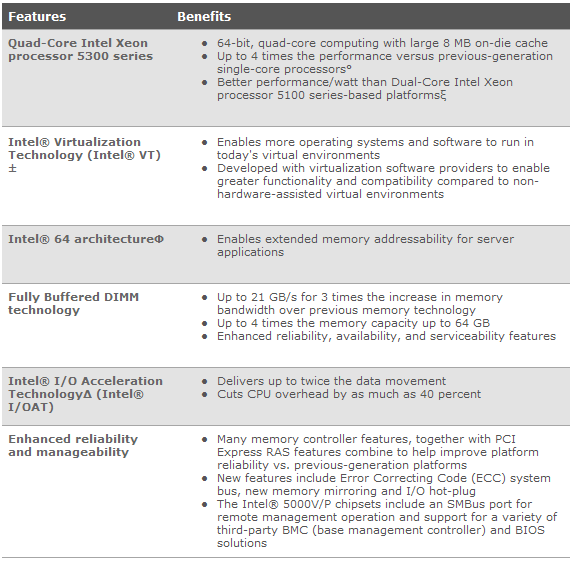Intel V8 Media Creation Platform - Dual Sockets - Dual Xeons
Introduction, CPU and Motherboard Specs

It was at this year's Consumer Electronics Show that we were first exposed to an Intel demo machine dubbed the ' V8' . Intel wouldn't label the machine as a direct response to the QuadFX platform by AMD, but they did want to stress the point that enthusiasts could have a dual-socket, eight-core Intel powered machine today if they went with a workstation platform. At the heart of the 'V8' machine were two quad-core Xeon processors, a dual-socket S5000XVN motherboard powered by the Intel 5000X-series chipset, and 4GB of RAM. No doubt a powerful system. But there was only so much Intel could convey in a 'quick and dirty' demo. To assess the true power and capabilities of the 'V8', we'd have to gain unfettered access to the machine and put it through its paces on our own terms and with our own suite of benchmarks. And that's exactly what we've done.
Armed with a pair of quad-core, 3.0GHz Xeon X5365 processors, 4GB worth of Samsung FB-DIMMs, and the very same S5000XVN motherboard, we assembled a full system and compared its performance to a dual Athlon 64 FX-74 powered QuadFX rig and a Core 2 Extreme QX6800 powered system. Before we show you how our version of the 'V8' performed, however, lets take some time and look at the individual pieces that make up the system's foundation. Below are the features and specifications of the motherboard and processors used in this system, and on the proceeding pages we'll get more intimate with the actual hardware.
|
|
|

The Xeon X5365's features and specifications look much like the QX6800, save for a couple of important details. At the core of the CPU is the same base architecture used in Kentsfield and Conroe. But with the Xeon X5365, Intel has upped the FSB to 1333MHz and cranked the CPU frequency to an even 3.0GHz. That makes these processors the fastest Core-microarchitecture based CPUs to come from Intel yet. The higher clock speeds, however, also increase the chip's TDP to 150 watts. The Xeons use a different 771 pin socket as well and for now they're not widely available. If you want to score a pair of X5365s today, about the only way to do so is to purchase a fancy new Mac Pro. Intel has plans to make these processors more widely available by the end of the year.
For a more detailed look at the technologies employed in the Xeon X5365 processor, we suggest taking a few minutes to check out our Conroe and Kentsfield launch coverage. Between those two articles, all of the main features of the Core microarchitecture are explained in detail.
|
|
|

Although the dual-socket S5000XVN motherboard is built around a chipset that isn't featured on any of the enthusiast-class motherboards we typically show you here at HotHardware, its main features should be familiar to many of you. The motherboard is powered by the Intel Chipset 5000X for Xeon processors. It has RAID support, PCI Express support, dual-Gigabit Ethernet, and High Definition audio. Where it differs from today's desktop motherboards is in its support for fully buffered DIMMs (FB-DIMM) and in its expansion slot configuration. There are a number of other differences as they relate to the motherboard's BIOS as well, but we'll get into more detail on that a little later.






